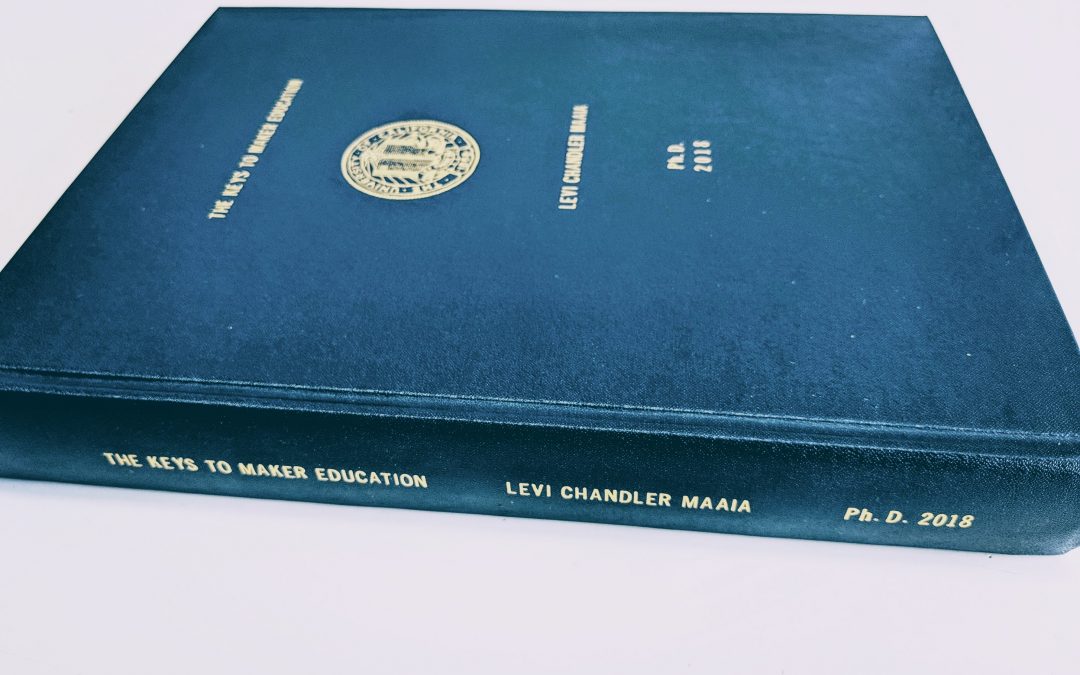The Keys to Maker Education:
A Longitudinal Ethnographic Study of a STEM-to-STEAM Curriculum-in-the-Making
by Levi Chandler Maaia
[Full Dissertation Text] [Summary Paper]
This study examined how and in what ways an instructor and students defined and influenced the co-creation of a maker-based STEM culture at an independent high school. It explored opportunities for learning and engaging in a collective, goal- and problem-based activity in an elective high school course and how and in what ways this theory and style of instruction afforded certain learning opportunities for students and what types of literacies were needed in order for students to confront the challenges of the course. Although so-called maker education has become a popular theme in STEM education, there is little significant evidence from empirical studies offering guidance as to how and in what ways the processes and practices of maker culture might be integrated by teachers into school settings. The lack of a clearer understanding of the possible roles of maker education in schools is a problem when preparing students for careers where the lack of student engagement with real-world problems in coursework is the most predictive factor in determining which students will abandon STEM studies (Connell, Halpem-Felsher, Clifford, Crichlow, & Usinger, 1995). Even highly successful students may be demonstrating skills such as test taking, but they are perhaps not learning literate practices (Green, Dixon, Lin, Floriani, & Bradley, 1992) in STEM fields.
The data collected for this study included video records of activity, conversations (both face-to-face and electronic), and journals and other texts, generated by students, teachers, and administrators, which were examined using ethnographic research methods. This data collection method was chosen in order to make visible what counted as meaningful interactions, what facilitated these interactions between actors that were essential to understanding how learning is conceptualized, and what counted as literate, social, and epistemic practices in a maker-based STEM program (Cunningham & Kelly, 2017).
Four important characteristics or keys emerged from this research and were essential in developing a definition of what counted as a maker-based education project or initiative in an academic context. The first key was that students worked both independently and collaboratively toward engineering a solution to an ill-defined problem. Secondly, the students and the instructor learned meaningful cultural practices and in turn act as practitioners in a particular STEM field. Thirdly, the teacher, rather than acting purely as an authority in problem-solving activities, acted as a facilitator by placing an emphasis on supporting student inquiry over direct instruction. Finally, and perhaps most apparent, was that the students were introduced to and encouraged to draw on local and virtual maker community resources, including local makerspaces, online forums, and the plethora of multimedia documentation available online in related fields. In fact, the students were encouraged not only to draw on these resources passively, but also to actively engage and participate in maker communities by asking questions and contributing their own experiences when applicable.


